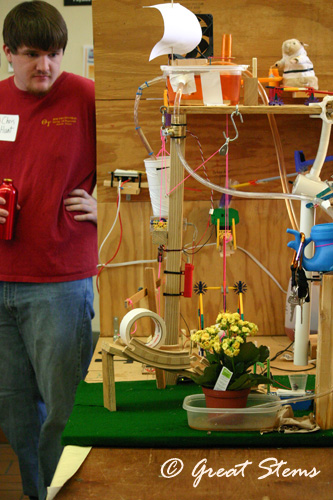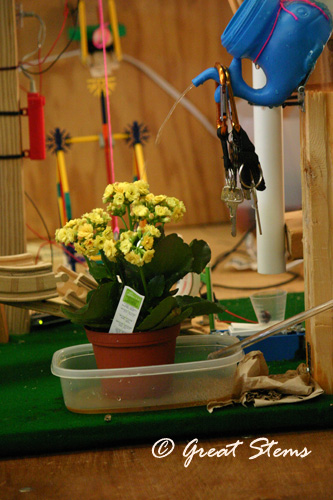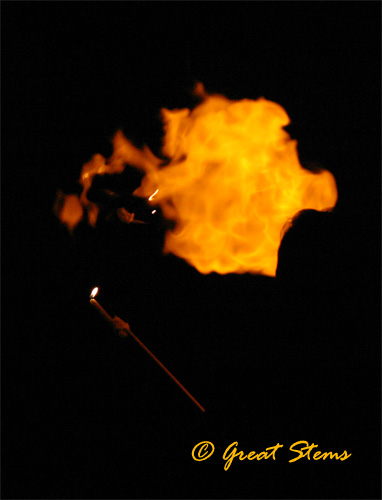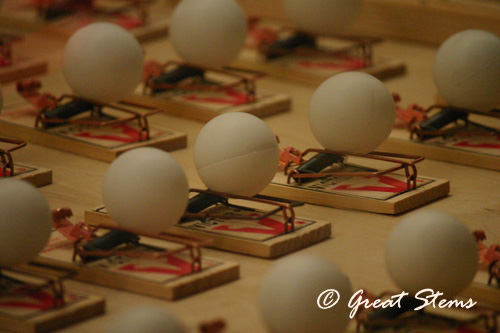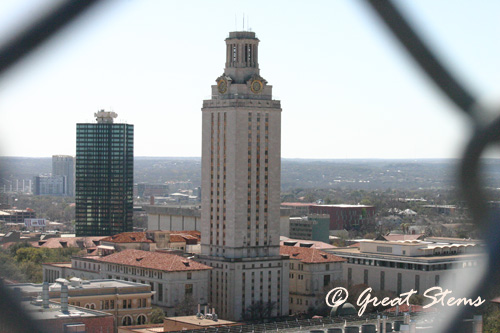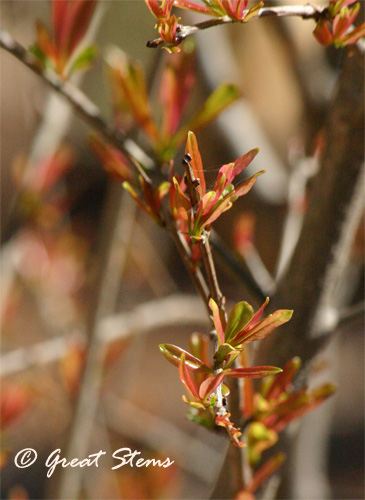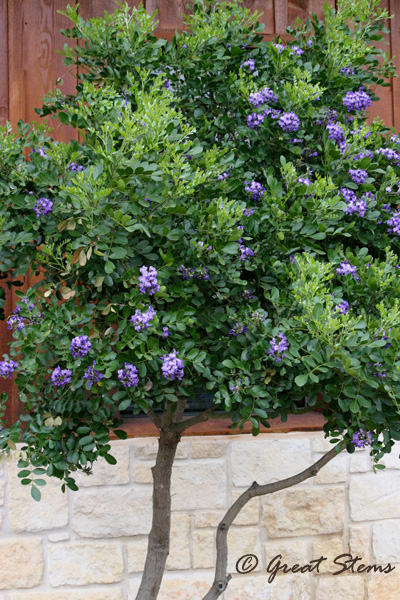 Beautiful mountain laurels in full bloom caught my eye during a recent visit to the Canyon Lake area, and I had to venture over to get a whiff of the grape-scented fragrance emitted by the flowers. Intoxicated by the scent, I paused to look around and realized that I wasn’t the only one enjoying the blooms.
Beautiful mountain laurels in full bloom caught my eye during a recent visit to the Canyon Lake area, and I had to venture over to get a whiff of the grape-scented fragrance emitted by the flowers. Intoxicated by the scent, I paused to look around and realized that I wasn’t the only one enjoying the blooms.
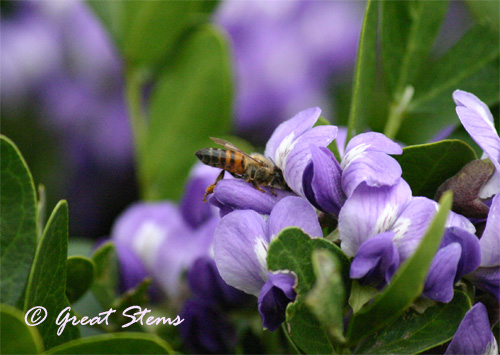 At first the honeybees caught my eye, especially as my ears sensed them, as well. They really had to push their way in to get at the nectar. If I were a bee, I would have worked hard to get in there, too — it smelled divine.
At first the honeybees caught my eye, especially as my ears sensed them, as well. They really had to push their way in to get at the nectar. If I were a bee, I would have worked hard to get in there, too — it smelled divine.
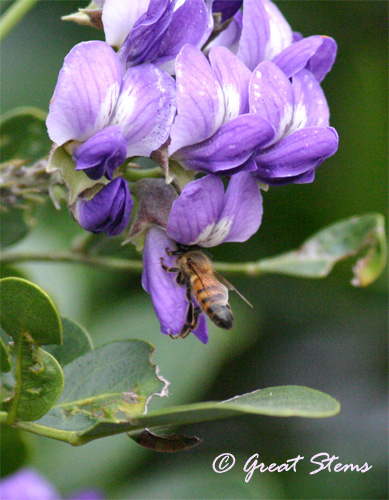 A hoverfly rested briefly on a seedpod.
A hoverfly rested briefly on a seedpod.
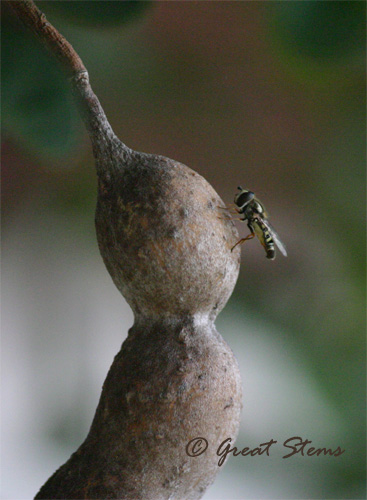 It was difficult to catch a picture of a hoverfly in the air — they didn’t hover much that day. Too busy trying to get energy refuels, I guess. But I’m fond of this motion shot, blurry that it is:
It was difficult to catch a picture of a hoverfly in the air — they didn’t hover much that day. Too busy trying to get energy refuels, I guess. But I’m fond of this motion shot, blurry that it is:
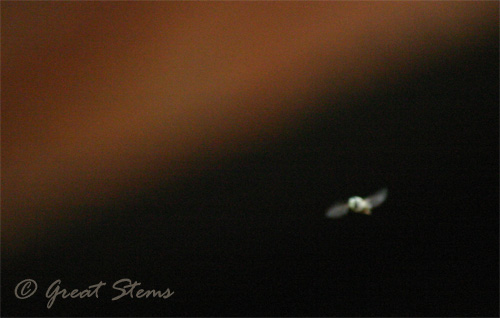
But the showstoppers of the day were the native bees, in this case metallic blue leaf-cutting bees. Dr. Jack Neff, a native bee specialist, tells me that they are likely female Osmia ribifloris, the bluest of our early season Osmia.
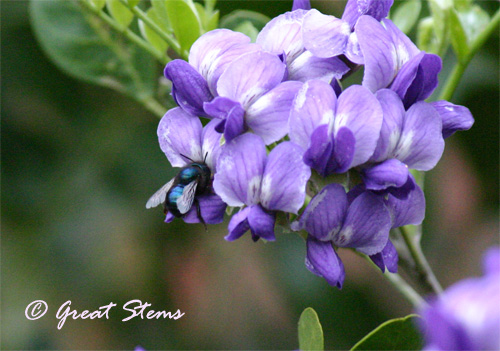
In the photo above, the bee has darker hairs on its upper thorax, while the bee below sports white pollen on her upper thorax and head hairs, with bonus yellow pollen “socks” (or at least “legwarmers”).”
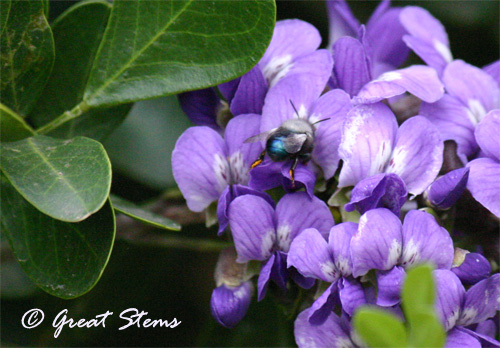
But as you can see in the next photo, the real pollen-gathering spot for this bee and other members of the Megachilidae family is on the ventral side of her abdomen, where little hairs hold the pollen she collects. This specialized area for pollen transport is called the scopa.
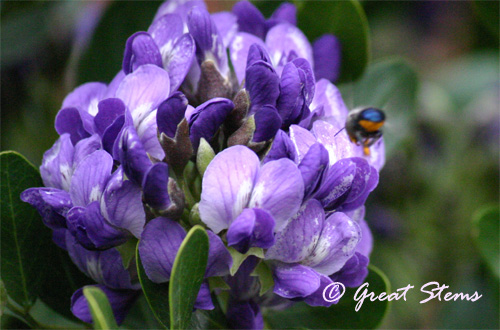 According to Dr. Neff, these lovely blue leafcutters apparently like to utilize old organ pipe mud dauber nests for their own nests, and they’ll chew leaves to make a green paste that they’ll then use to plug the nest holes. Clever little natives.
According to Dr. Neff, these lovely blue leafcutters apparently like to utilize old organ pipe mud dauber nests for their own nests, and they’ll chew leaves to make a green paste that they’ll then use to plug the nest holes. Clever little natives.
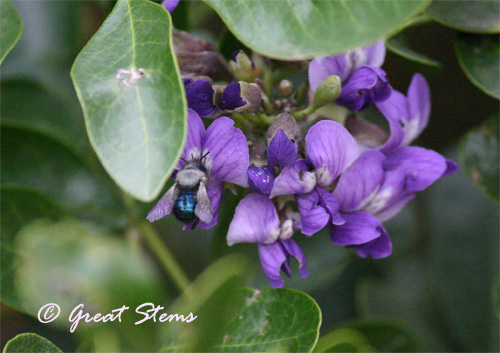
Beauties, these little bees. I feel lucky that I got to observe them for a time.
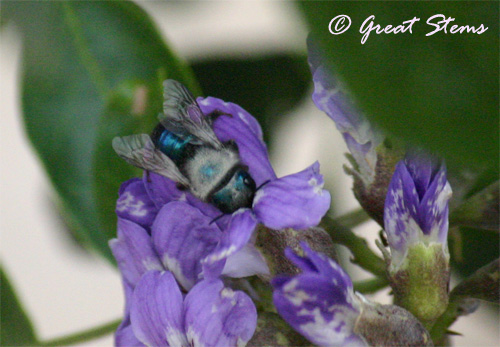 Getting back to the Mountain Laurel, inside those seed pods are the Mescal beans, as the seeds are often called, and they’re bright red and highly toxic. Some people like to take the seeds, rub them on a sidewalk to build up heat from friction, then burn the person next to them. Ouch.
Getting back to the Mountain Laurel, inside those seed pods are the Mescal beans, as the seeds are often called, and they’re bright red and highly toxic. Some people like to take the seeds, rub them on a sidewalk to build up heat from friction, then burn the person next to them. Ouch.
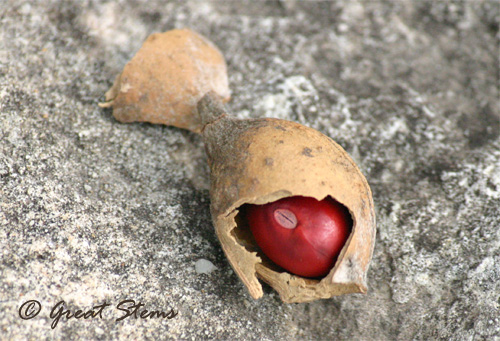 The Texas Mountain Laurel is a slow-growing, small, evergreen Texas native tree. It thrives in our Texas weather and soil and on “not being messed with” — as in plant it and then leave it alone. Since this method of gardening works for me, I have three now and counting.
The Texas Mountain Laurel is a slow-growing, small, evergreen Texas native tree. It thrives in our Texas weather and soil and on “not being messed with” — as in plant it and then leave it alone. Since this method of gardening works for me, I have three now and counting.


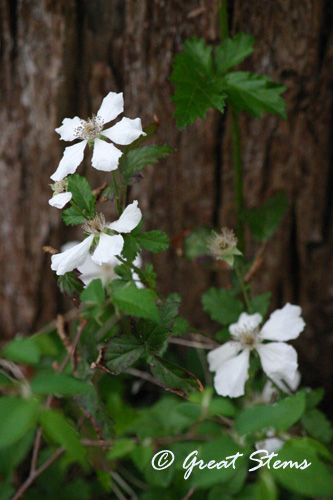
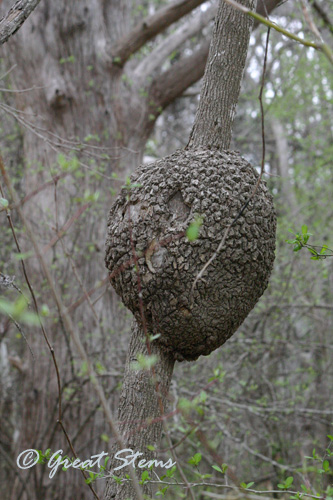
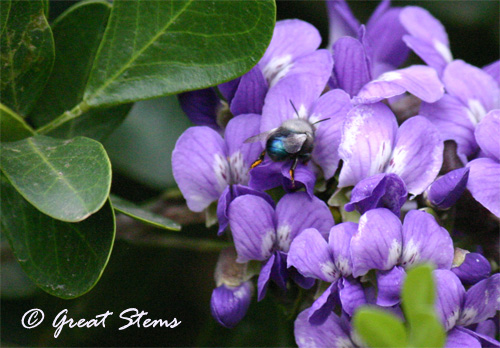
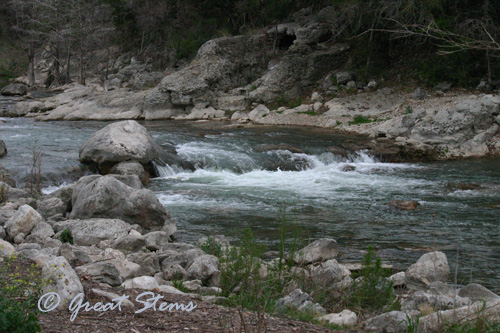
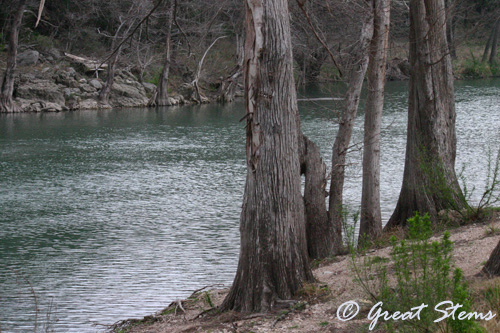
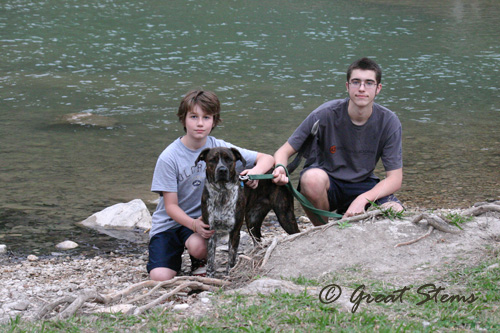
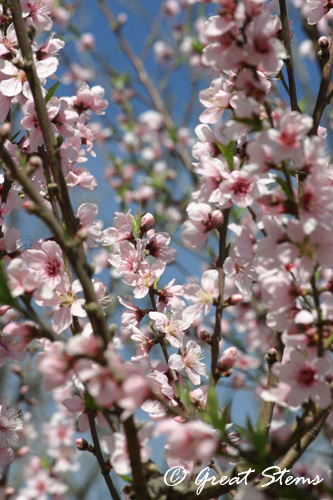
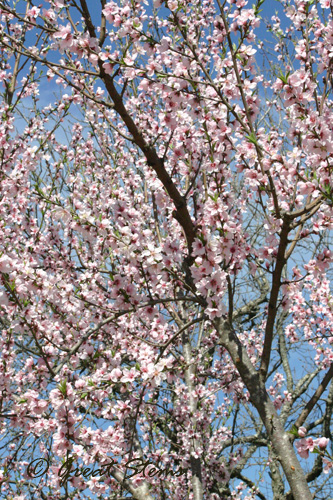
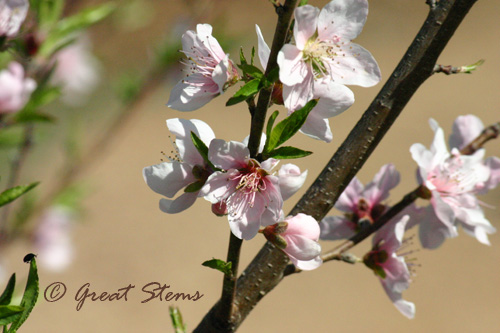
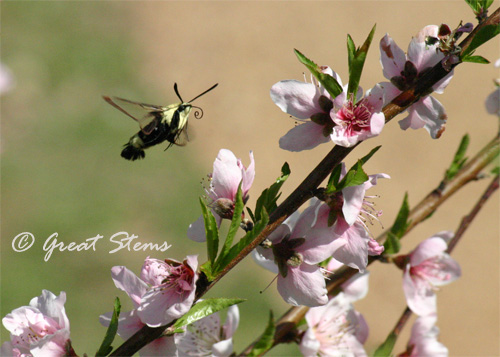
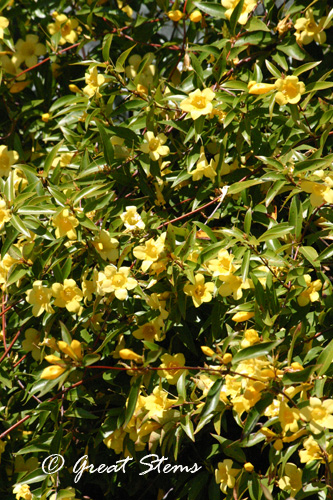
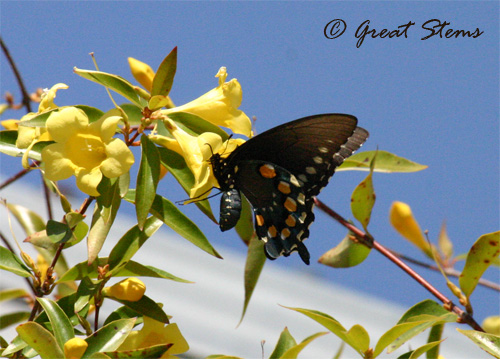
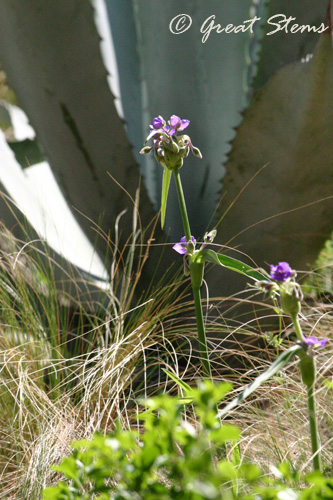
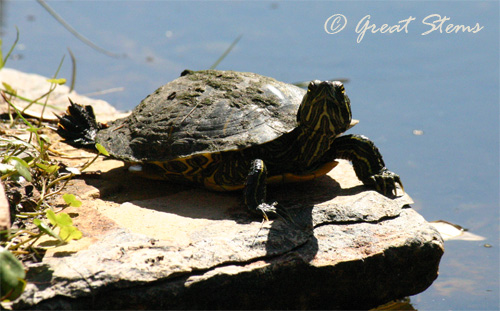
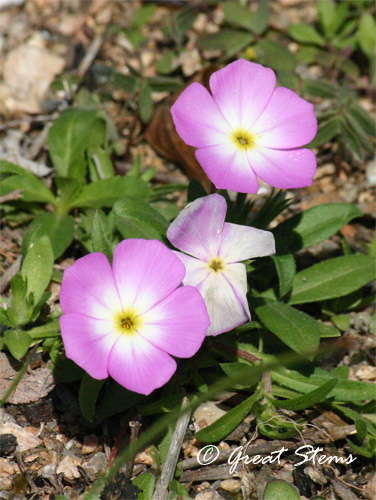
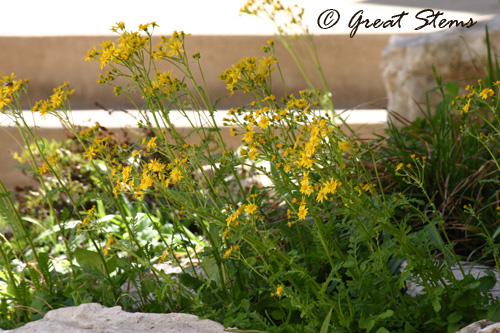 Skulls in a West Texas desert bed…
Skulls in a West Texas desert bed…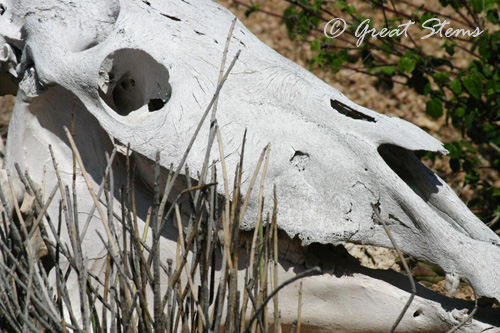
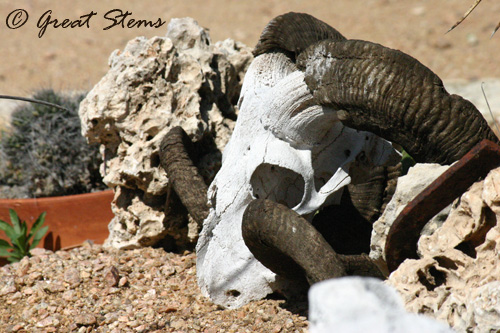
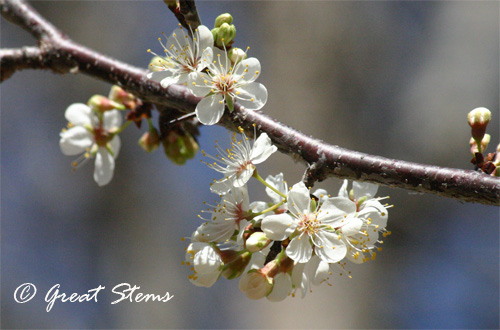
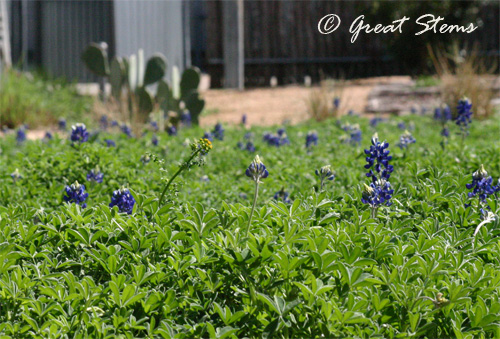
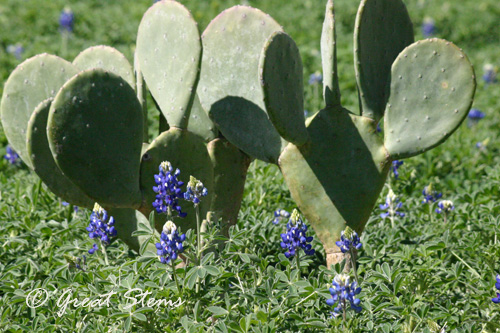
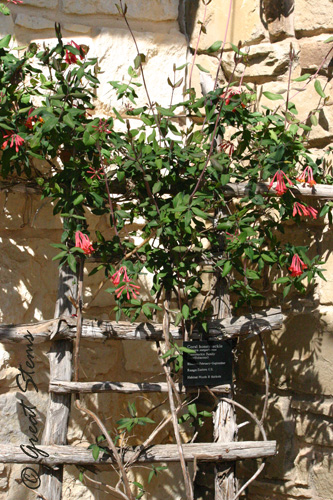
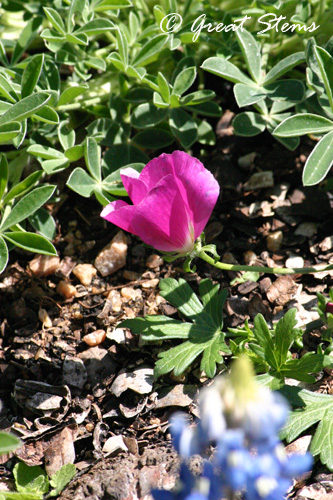
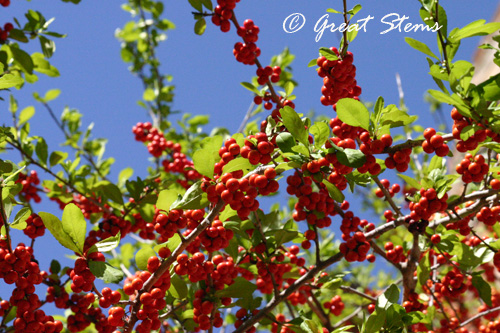
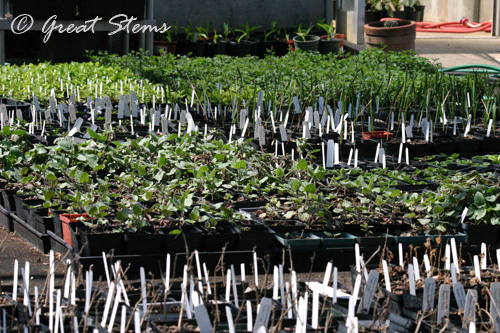
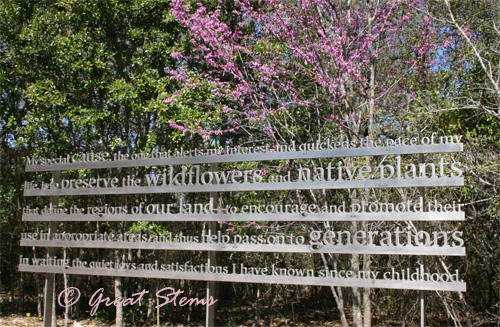
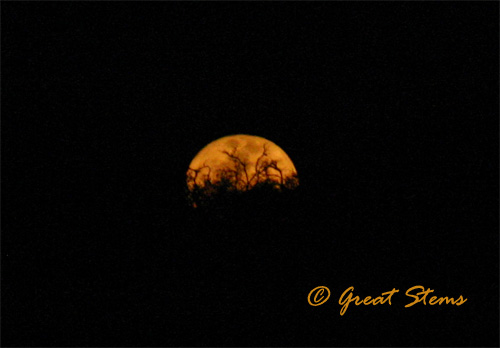
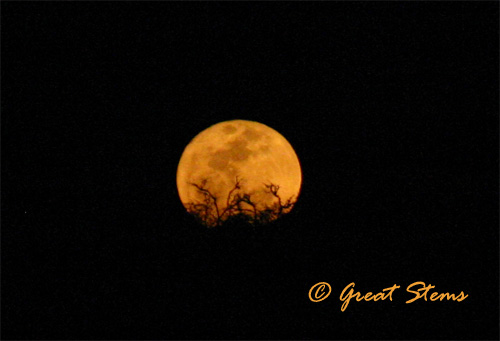
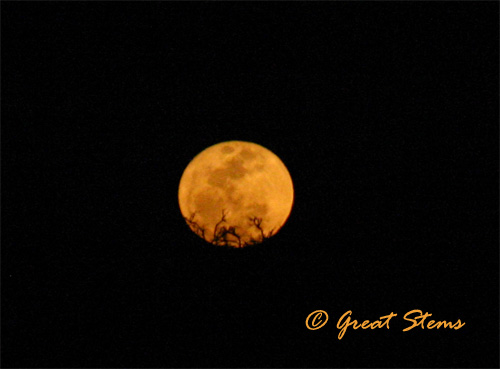
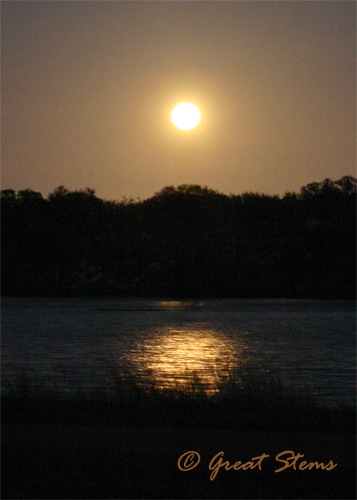
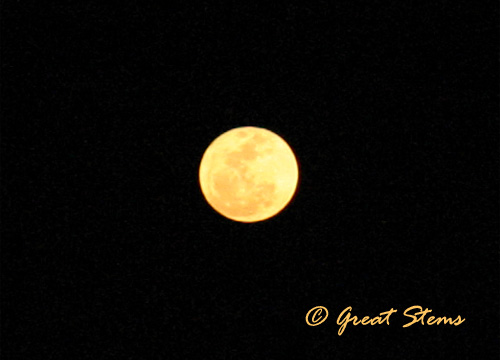
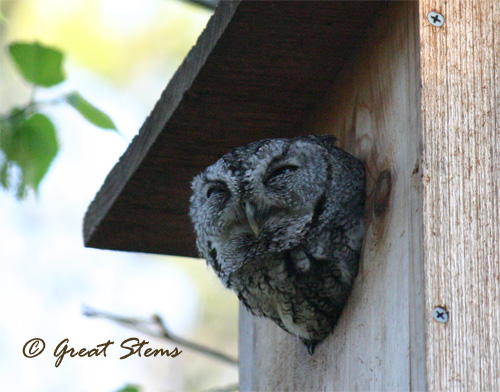
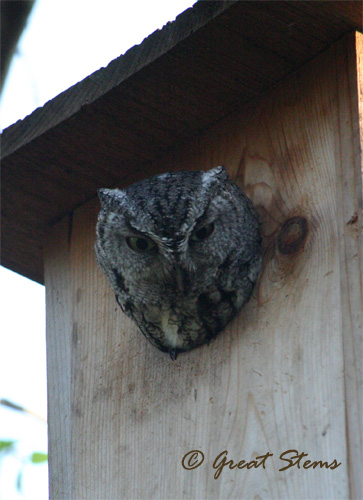
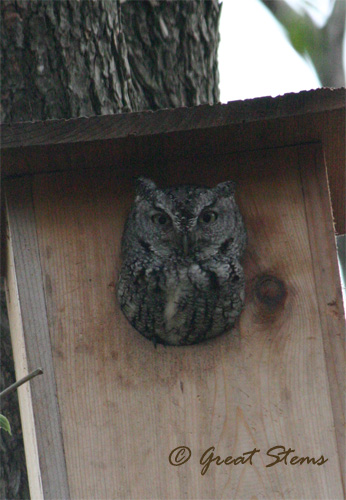
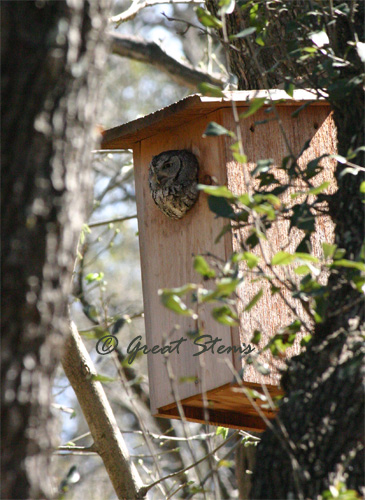
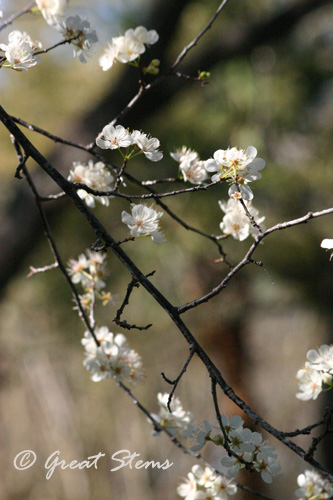
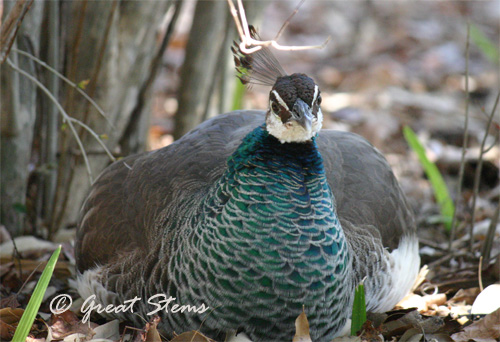 My family and I stopped by the park last week to visit the grounds’ peacocks and cottage garden. Much of the plant life was still waking up after its winter sleep , with just the tiniest of buds present during our visit, but early bloomers were kind enough to welcome us with color, including the fragrant Mexican plum above, and the vibrant redbud below. For more information on the delightful pink blooms around Austin, please visit my
My family and I stopped by the park last week to visit the grounds’ peacocks and cottage garden. Much of the plant life was still waking up after its winter sleep , with just the tiniest of buds present during our visit, but early bloomers were kind enough to welcome us with color, including the fragrant Mexican plum above, and the vibrant redbud below. For more information on the delightful pink blooms around Austin, please visit my 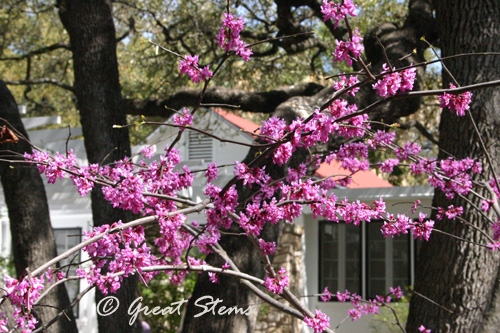
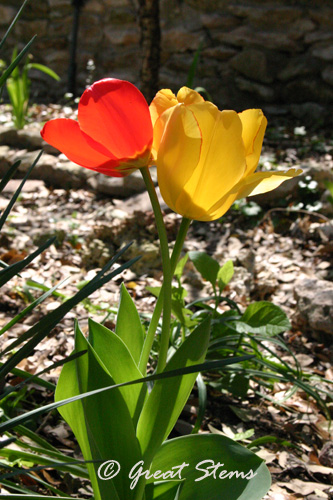
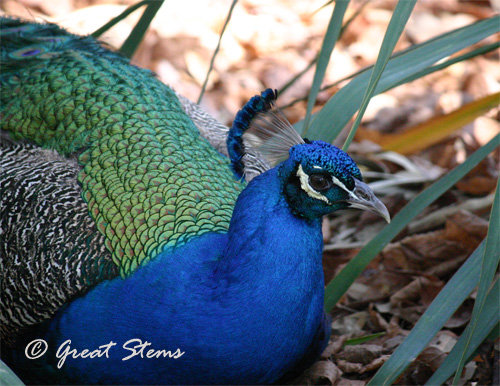
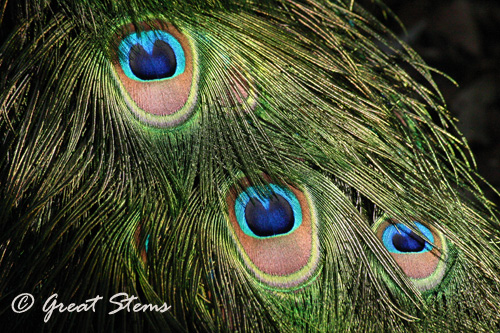
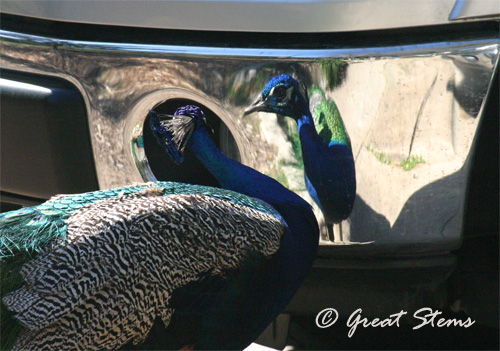
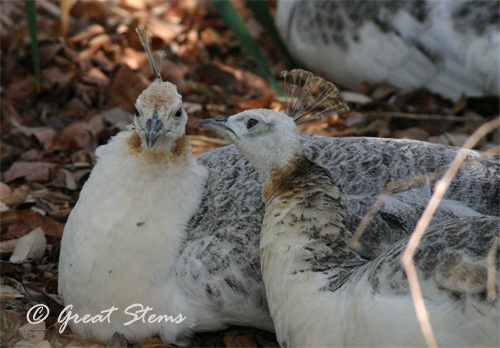
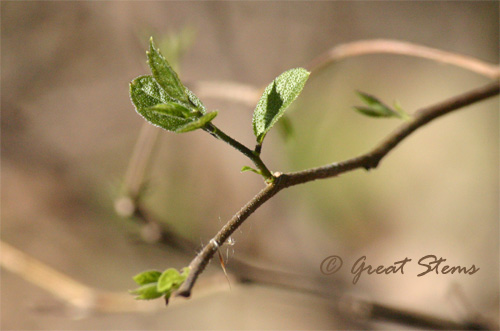
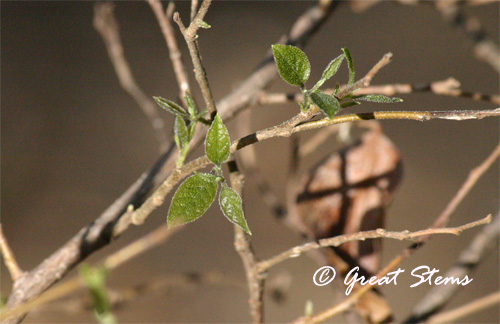 Hurray for my little tactile-pleasing sandpaper delights!
Hurray for my little tactile-pleasing sandpaper delights! 